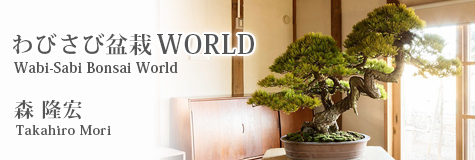
Vol. 11 Encountering Bonsai, Interacting with Bonsai and Looking Towards the Future
How time flies. December is already upon us.
This is my 17th winter since I first entered the world of Bonsai.
My winter preparations are complete, and I have been spending my days as usual carrying out the work my clients have requested.
Though I dislike the cold weather, I very much enjoy working silently next to my oil stove with a kettle boiling on top.
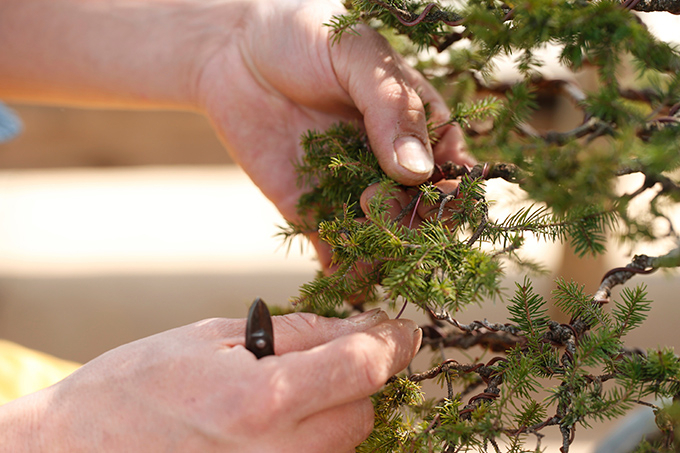
My primary work as a bonsai artist is maintaining bonsai trees.
My main job is maintaining bonsai trees, either while visiting homes of bonsai aficionados to see their bonsai trees or by bringing their trees back to my own bonsai garden. That is why, despite opening my own bonsai garden four years ago, I keep it closed on weekdays and instead open on only Saturdays and Sundays.
Many of my clients are elderly, often in their late 60s to 80s, and I have worked with many of them for over 10 years. During that time I have been able to get a glimpse of the relationship they and their families have with bonsai, which has provided me with much food for thought.
When I see my clients' bonsai shelves (where bonsai are placed), I can see how well the trees are being taken care of.
It is often said that bonsai trees "tell no lies," but even trees that appear healthy may be suffering from hidden problems caused by weather or maintenance. However, this is to some extent unavoidable and is perhaps one of the difficulties of caring for bonsai, which cannot speak for themselves.
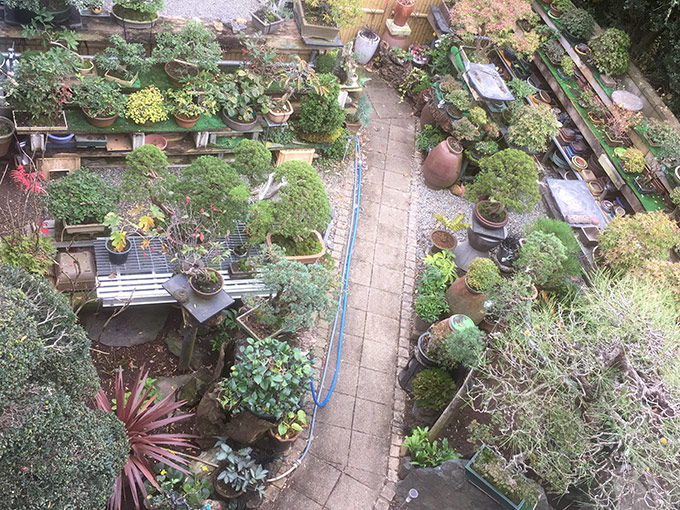
The bonsai shelves of aficionados are full of memories.
When the health of a bonsai owner declines, so does that of his/her trees.
Over the past several years, some of my clients have seen their health deteriorate and are no longer able to maintain their trees as they used to. When they have been hospitalized or receive treatment, their families have had to help out, such as by watering the trees.
My clients often express a mixture of sadness at being unable to do anything, and gratitude for their families, such as, "I have no complaints because they water my trees for me."
I also make sure to express my thanks to their families on behalf of my clients and try to help ease their concerns, telling their families, "So-and-so is truly grateful to you," and, "Thank you for watering the trees regularly. Bonsai trees are healthy as usual because you water them."
As such family members who hadn't shown their interest in bonsai carry out those tasks, a peculiar thing happens. They gradually start commenting on the trees, saying things like "Oh, a flower has bloomed," "The fruits and nuts are lovely," or "I wonder if pine trees shed their leaves as well." In this way, despite previously having no interest in bonsai, they begin to develop a fascination with the constant changes of the trees.
Bonsai aficionados often have difficulty sharing their interest with their families despite their long relationship. So, although it is unfortunately the result of illness, I find it somewhat heartwarming to see bonsai becoming a topic of discussion for the family.
Some who have suffered a temporary setback in their lives, from declining health, needing a lengthy hospital stay, or losing a loved one, are able to find the will to go on out of a desire to once again take care of their bonsai trees, helped along by their cherished experiences and the knowledge that those trees need their care.
Thus to the aficionados, their interactions with bonsai hold a similar place to that of their families, giving them purpose in life over the years.
For me, the world of bonsai is one that I threw myself into at the age of 22 without any knowledge on bonsai.
As a young boy, I would play in a deep forest, creating somewhat like "secret bases," however, I did not interact with the flora, and later as a university student, my contact with nature was limited to reading several books on the environment for a report on environmental issues.
Many aficionados tell me of their own childhoods, saying "As a child, I would hike through the woods. If I found an interesting sapling, I would pull it out of the ground and put it in a pot at home," or "Back in the day, there wasn't much else to do for fun."
I am often inspired by my elderly clients, who still exhibit the same sense of curiosity that they had in their youth when they played and learned from nature. I treasure my interactions with them.
Though in the past I had less involvement with plants than most, I have gradually learned to understand their language after encountering bonsai, and now know the joys of experiencing firsthand nature's harshness and gentleness through the climate and seasons, trees in the mountains and forests, and blooming flowers, fruits and nuts that peak out through the foliage.
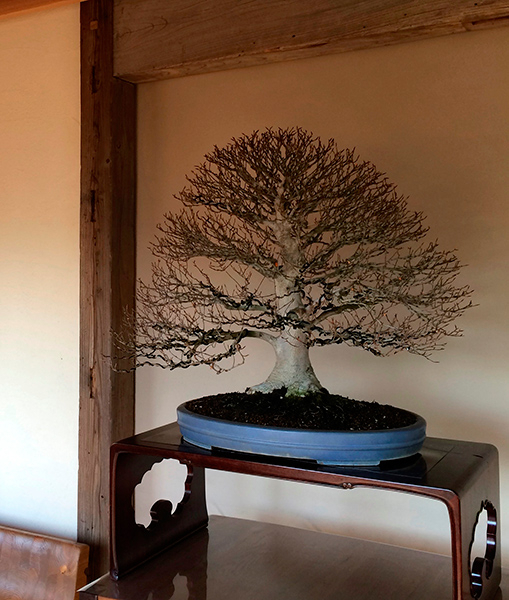
My encounter with bonsai has taught me to understand nature.
I intend to pass on to the future generations the thoughts of my forebears, which have been instilled in the bonsai living along in their pots over long spans of time. As a bonsai master who has learned much from my encounter with bonsai, I approach my work with humility. I consider myself blessed to continue my work, small as it may be, maintaining the bonsai side by side with my clients.
As I continue firmly on the path of bonsai, I will of course also not forget the grand dreams I envisioned when I first started.
I thank you, the readers, for following along over the course of this past year.
It would give me great joy if this series of essays has succeeded in offering clues on how to take care of bonsai or perhaps even inspiring some of you to become bonsai aficionados yourselves.
I wish all of you a happy and peaceful New Year from the bottom of my heart.
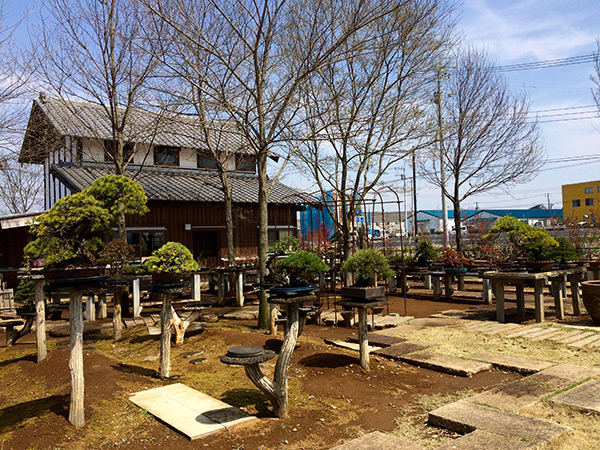
I hope that one day we may meet at "Bonsai Mori."
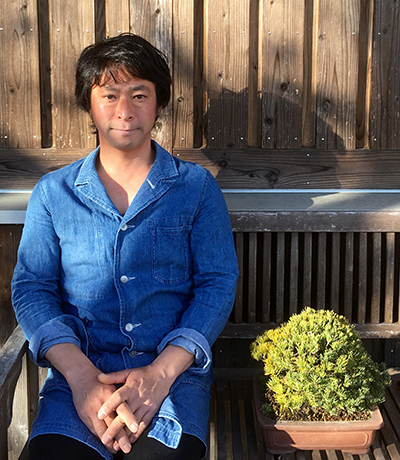 Takahiro Mori
Takahiro Mori
Bonsai master Takahiro Mori was born in Tokyo in 1979. After graduating from the College of Applied International Studies at Tokiwa University, in 2002 he began studying bonsai as an apprentice at Katsuta Koushouen, a bonsai garden in Ibaraki Prefecture. In 2006, he became independent and launched his own activities. In 2009, one of his works won the Kokufu Award at the Kokufu-ten Bonsai Exhibition, an event with a long and distinguished history. From 2009 to 2013, he worked as an in-house bonsai artist at the Omiya Bonsai Art Museum, Saitama. In 2013, he traveled to Kosice in Slovenia, the European Capital of Culture 2013, as a bonsai demonstrator, and participated as a representative of bonsai masters in the presentation for Saitama's bidding to host the 8th World Bonsai Convention, which will be held in 2017. Mori conducted demonstrations at Bonsai Slovakia 2014, and participated as a bonsai expert in the Japan Government exhibit at the EXPO 2016 Antalya International Horticultural Exposition held in Turkey in 2016. Today, in addition to his work as a bonsai master, Mori is actively engaged in initiatives to promote the art of bonsai in Japan and abroad through workshops for beginners that he conducts at his atelier Bonsai Mori established in 2013 and bonsai classes he organizes in California in the United States.
Bonsai Mori website:http://bonsaimori.jp/
Bonsai Mori Facebook:https://www.facebook.com/Bonsaimori/
Related Articles
Keywords
Back Issues
- 2022.7.27 Beyond Disasters - T…
- 2022.6.20 Beyond Disasters - T…
- 2021.6. 7 Contributed Article …
- 2021.4.28 Crossing Borders, En…
- 2021.4.27 Contributed Article …
- 2021.4.20 Contributed Article …
- 2021.3.29 Contributed Article …
- 2020.12.22 Interview with the R…
- 2020.12.21 Interview with the R…
- 2020.11.13 Interview with the R…

